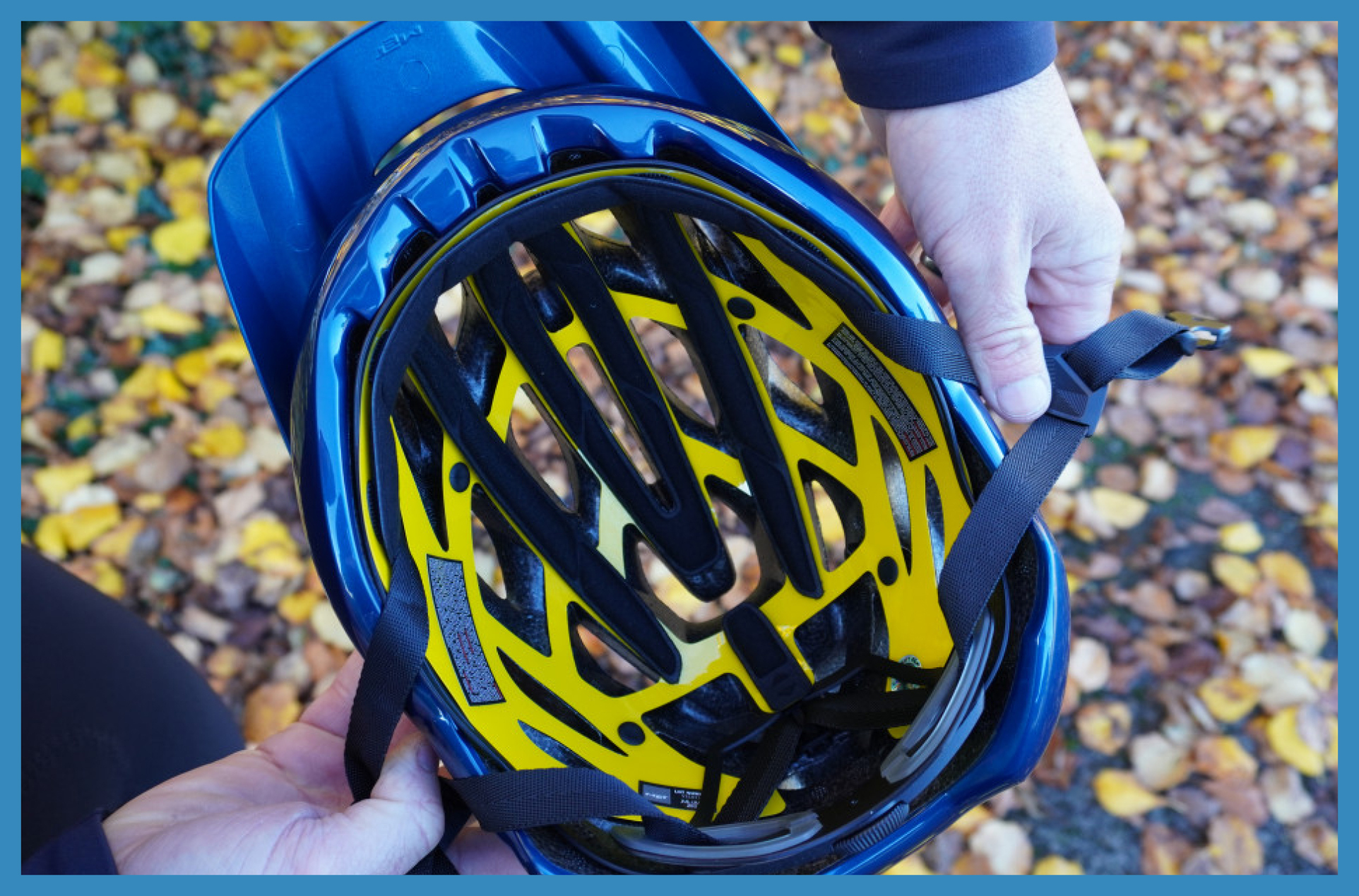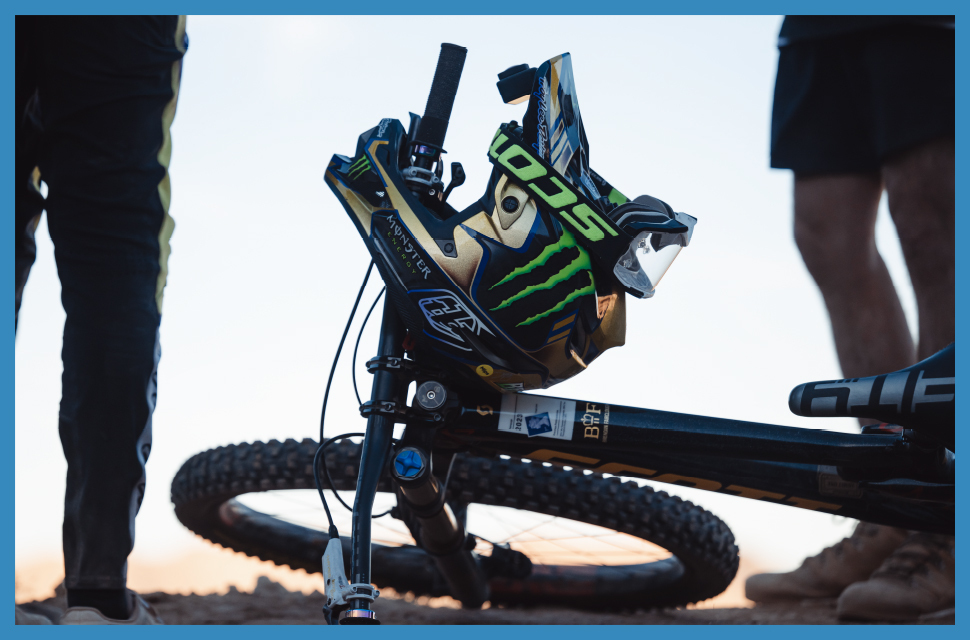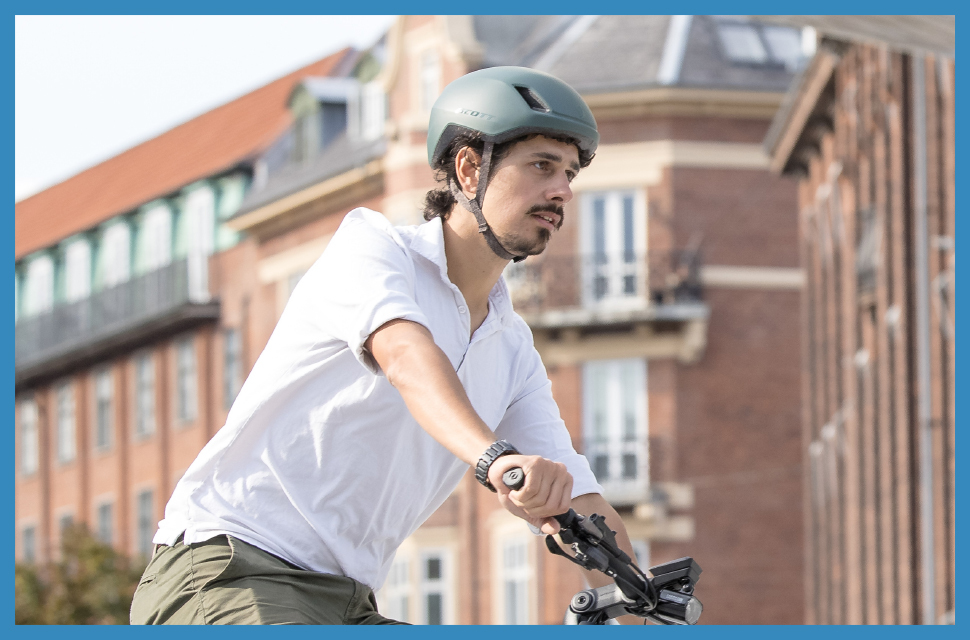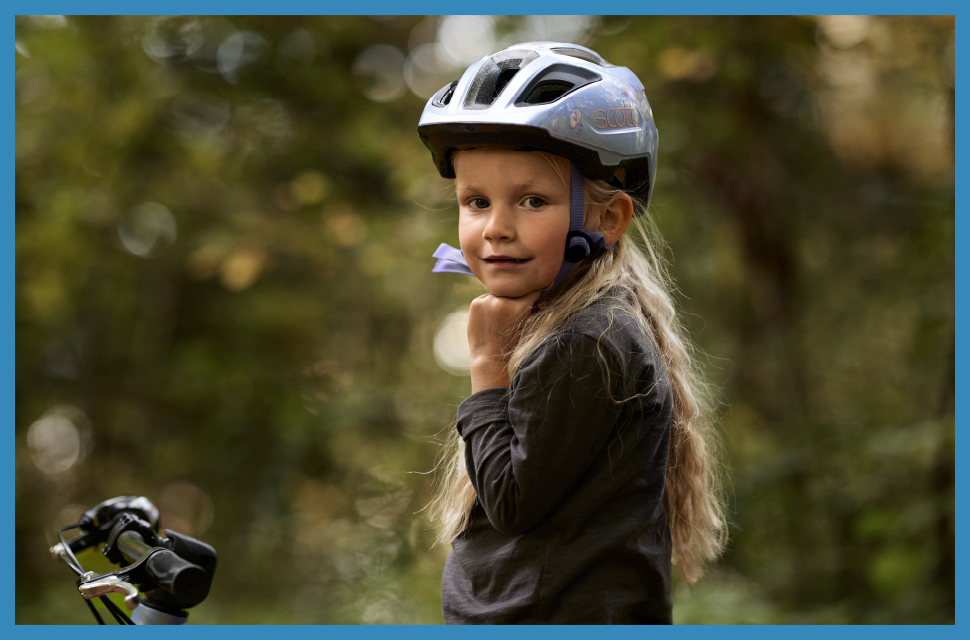
What You Need to Know Before Buying a Helmet?
Your cycling helmet is your trusty companion on the road, protecting your most important asset - your brain. But not all helmets are created equal. Before you hop on your bike, here's what you need to know to choose the right helmet for you.
Finding the Perfect Fit.
When it comes to helmets, the right fit is primordial. A helmet should sit snugly on your head, level and low on your forehead. Give it a shake - if it moves more than an inch in any direction - it's too loose. Remember, a helmet that doesn't fit properly won't offer the protection you need.
To find your size, you can measure your head circumference just above your ears (the average adult will range between 55 to 60cm).

Helmet Features to Look Out For.
From ventilation to visors, helmet features can enhance your riding experience.
Ventilation keeps you cool and comfortable, especially on long rides.
A visor can shield your eyes from the sun and debris, while an adjustable fit system ensures a custom, secure fit.
Comfort is key, so opt for a helmet with padding and adjustable straps for a comfortable fit.
High-quality helmets are equipped with MIPS. The Multi-directional Impact Protection System lies inside the helmet between the comfort padding and the protective foam. The MIPS moves on impact, reducing the forces transmitted to the brain during a fall or accident.

Types of Helmets.
Various cycling helmets (road, mountain, commuter, and kids bike helmets) offer different features depending on your cycling activity. Consider where and how you'll be riding to determine the best helmet for your needs.
Road bike helmets
Road helmets are sleek, compact, and lightweight and feature large air vents to prevent overheating while cycling. These helmets are comfortable with aerodynamic properties that help road riders achieve optimal speed. Different shapes of road helmets are available, ranging from more aggressive designs to simpler ones.
Mountain Bike Helmets
There are four main categories of mountain bike helmets.
Cross Country Helmets: These helmets are similar to road helmets but built with tougher material for extra durability. They have large vents to keep your head cool during rides.
Trail Helmets: Trail riding helmets provide more coverage on the back and temples than cross-country helmets. They are heavier than cross-country helmets, have smaller vents, and often come with a front peak and goggle retention system.
Dirt Jumping Helmets: Dirt jump helmets are designed to protect you from multiple impacts on a dirt track. They have fewer vents than the previous two types of helmets and cover as much of your face as possible to provide maximum protection.
Full-Face Mountain Bike Helmets: These helmets are used by gravity and enduro cyclists who require maximum protection. They have limited vents and a chin bar. Made of elastic shell material (EPP) that allows for multiple impacts, they are compatible with goggles or sunglasses.
City/Casual riding helmets
Urban helmets are designed with style in mind without compromising safety, making them perfect for cycling in the city. These helmets are sophisticated, light yet tough, and ideal for both commuters and weekend cyclists. Safety always comes first when it comes to protecting your head. That's why city helmets usually come with an array of extra safety features, such as reflective strips, integrated rear lights, and MIPS technology (Multi-directional Impact Protection System), to keep you extra safe while cycling in town.
Kids helmets
It is vital to ensure that your child wears a helmet while cycling, regardless of the type of cycling they prefer. Encouraging them to wear a helmet from the beginning of their cycling journey will instil a safety-conscious mindset as they grow older.
The most crucial aspect is ensuring the helmet fits your child correctly. You should adjust the straps to create a tight V-shape under their earlobes and secure the strap snuggly under their chin without being too tight. Leave a two-finger width space between the edge of the helmet and their eyebrows.
Safety Standards
In Europe, cycling helmets have to pass the EN1078 safety standard. This requirement ensures the helmet has passed rigorous tests and will provide adequate protection in an accident. All our helmets comply with this safety standard, so you don't have to worry about your head safety when buying from us.
Is it mandatory to wear a bicycle helmet in Ireland?
Cyclists are not legally obliged to wear a helmet while cycling in Ireland. However, it is highly recommended. It is an essential protection for your head, preventing you from brain injuries in case of accidents. In addition, cycling helmets can help boost confidence, making you feel more protected. Additional features like reflective strips and built-in lights aid in being seen and feeling secure on the roads.
When to Replace Your Helmet
Even the sturdiest helmets have an expiration date. If your helmet has been involved in a crash, shows signs of wear and tear, or is over five years old, it's time to replace it. Your safety is worth the investment in a new helmet.
Your cycling helmet is your first line of defence on the road. Choose a helmet that fits well, meets safety standards, and suits your style. With the proper helmet, you can ride confidently, knowing you're protected in style. So, gear up, hit the road, and enjoy your ride safely and stylishly.










